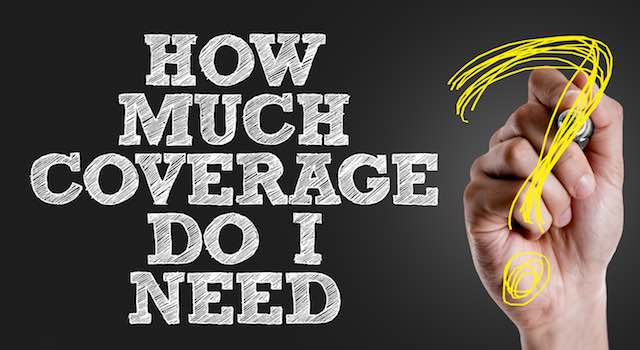Like many private sector businesses, the federal government offers affordable group life insurance coverage. This coverage, known as Federal Employees Group life Insurance or FEGLI, has distinct advantages and significant limitations.
Let’s take a look at why FEGLI basic coverage is a good option, and why you may be better off purchasing supplemental coverage privately.
Overview of FEGLI
Basic life insurance coverage under FEGLI is equal to one year of base pay rounded up to the next thousand, plus $2000. This group life benefit is provided with no medical exam and is subsidized 33% by the government (100% in the case of postal employees).
The basic benefit, not tied to the insured’s age or health, is currently priced at .15 per thousand of coverage each pay period. Additionally, the basic plan is supplemented free of charge starting at age thirty five with a ten percent (10%) increase in benefit each year until age 45. The supplemental benefit is removed at age 45.
Beyond Basic Coverage
Beyond the basic coverage, federal employees have options to increase coverage for themselves and their family members:
- Option A adds $10000 to the benefit amount and is priced in 5 year brackets going up markedly at age 55.
- Option B allows you to add a multiple of your salary to the insurance amount, up to five times base salary. Option B pricing is based on your current age and adjusts at every five-year interval.
- Option C provides some coverage for spouses and dependents, in multiples of $5,000 and $2,500 respectively. Like options A and B, the cost on option C adjusts in 5 year increments.
The Option B Decision
Because the cost per thousand dollars of coverage on the basic plan is inexpensive and does not change with age (until retirement), the major decisions revolve around Option B (and to a lesser degree, Option C).
The strongest arguments for using Option B to enhance your coverage center around ease of implementation. If you elect additional coverage within 60 days of hire, there are no health requirements, and the premium is simply payroll deducted. Easy-peasy.
However, if you miss the initial 60 day window, you will need to either provide evidence of good health (at your own expense), wait for a life event (marriage, child, death of spouse), or an OPM declared “open season” (rare).
The arguments against using Option B for additional coverage revolve primarily around cost in the later years, with policy options being an additional concern.
The Alternatives
The alternative to Option B is using the marketplace to find term life insurance at considerably less cost as you age, which has a fixed or “level’ payment, and provides better policy options such as living benefits or conversion privileges.
In addition to cost and policy advantages, individual policies are portable, and are not affected by a change in your employer. This is a significant consideration as most people change employers a minimum of seven times over the course of their careers.
If you are young and/or very healthy, the life insurance marketplace is very easy to navigate. No medical exam policies are now mainstream and the application process can be done in 20 minutes or less on the telephone and computer with the help of an independent agent.
Rate Comparison
Consider this example of Tom, a 38-year-old Federal employee, who wants the maximum amount of Option B. He elects five times his annual pay of $39,400 (rounded to $40,000), which totals $200,000. His cost for the Option B coverage is $13/mo. This is as good or better than any preferred plus rates available in the marketplace.
However, in 17 years when Tom is 55 years old, his monthly cost for Option B rises to just over $100/ mo. This is more than double the best rates available in the marketplace for a 55 year old male rated preferred plus, and more than 7 times the cost of the twenty year term at age 38. If Tom had taken a 20 or 30 year term policy initially, he’d have been a lot better off now.
Health Concerns & Independent Agents
If, on the other hand, you have some health issues, things can get tricky. The no exam options tend to be for healthier applicants (they use medical and driving records to underwrite). So, you would likely need to take a para-medical exam where blood and urine samples are taken.
Because different life insurance carriers have different appetites for specific kinds of health risks, it is important that you shop the marketplace with the help of an independent agent.
A good independent agent will have access to 50+ carriers and will know which carriers are most willing to treat your condition most favorably.
The Bottom Line
Your decision about FEGLI Option B is personal and should largely be determined by your health. While it is advisable that healthy folks look elsewhere, if you are concerned about your health rating, electing FEGLI and then shopping the marketplace might be the smart move. After all, you can always cancel coverage once you have a better policy in place.
James Tobin, CFP® is the founder of the Life Insurance Help Desk. In addition to providing expertise on life insurance matters, he teaches ESL and is a news junkie. Mr. Tobin resides with his wife Nicole in Norwalk, CT.



